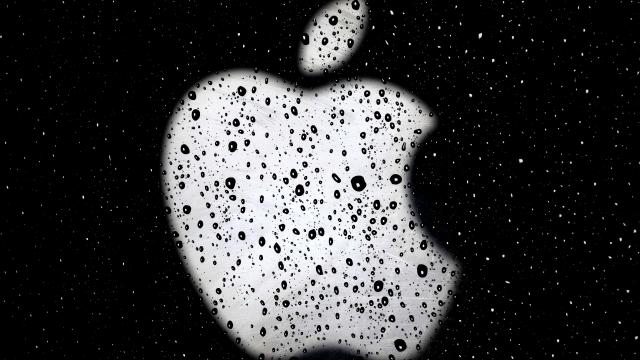Climate change is in the process of turning our world into a dystopian nightmare. But at least we’ll have the brands, brands that’ll continue to try and sell us crap to deal with our future hellscape.
On Tuesday, corporate social responsibility group CDP released its march to decarbonization and Danone expanding its use of lower carbon recycled plastics.
And by and large, many of the multinational companies included on the list view climate change as a serious problem. But the reports companies submitted in response to CDP’s survey asking them to disclose how they’re planning for climate change offers a perverse insight into our late stage capitalist world. Despite capitalism playing a huge role in the problem, companies remain committed to the system and are already planning on how to profit off our misery.
Pharmaceutical giant Merck is planning on an expanding market for cures to “tropical and weather related diseases including waterborne illness.” Google seeing rising weather damages as an “opportunity driver could have a positive impact on our brands” like Google Earth. Home Depot is looking forward to selling more air conditioners thanks to more intense heat waves.
Apple could gain $1,300 million in brand value — a half per cent of Apple’s total — because of the flashlight, “find friends”, and various other benefits of an iPhone or Apple Watch during weather disasters. And Wells Fargo will be there after disaster hits. The bank “has the opportunity to provide financing to support” in the form of loans for efforts to rebuild.
But the opportunities don’t stop there. CDP graded 6,800 companies’ reports. Gizmodo dug through dozens and found some other new and exciting business opportunities climate change offers.
Here’s Honda:
“…Honda’s generators can serve customers as independent sources of power. The Katrina disaster was followed by a 27% increase in unit sales of generators resulting in over 200 million yen in increased sales during the August to November 2005 period compared with the same period of the previous year.”
The company has invested $331 million in R&D for its “power product business”. Hurricane Maria is another prime example where generators were needed post-storm, showing the business model could be a strong one.
Asthma is a major concern with gas-powered generators (plus think of the carbon pollution), though. Nissan has a more more air quality-friendly option in the wings for when a Category 5 hurricane or typhoon strikes:
“Nissan’s electric vehicles have on board battery capacity to light up one average house in Japan for 2 days with an advanced power supply system. In case of natural disasters or blackout periods, prompt disaster recovery is crucial. We see EV batteries along with vehicle to home/building energy supply system as playing a key role in the restoration of electrical power. We expect a growth in demand for disaster risk reduction systems, and this creates additional benefits to the ownership of EVs.”
The only downside with using your electric vehicle as a generator is that it eventually runs out of power unless you have a source to plug it into. Post-Maria, that was definitely not happening. Ditto for other storms and wildfires, but as a stop gap for a few days while you scavenge for food, sure.
Between the storms, you may need to update your wardrobe (or replace it entirely). But what you wear may change in a warming world, and it’s got Macy’s worried:
“For example, extended periods of unseasonably warm temperatures during the winter season or cool weather during the summer season could reduce demand for a portion of our inventory and thereby reduce our sales and profitability.”
Now look, all that stress from climate disasters and shopping till you drop means you’re probably going to need a vacation at some point. Just one problem: The greenhouse gas emissions from all those flights could upend your travel plans. Sea level rise and heat are already impacting airports. Add in extreme rainfall and, well, your plane may not be able to land at your destination.
American Airlines has an answer, though:
“During sever [sic] weather events, such as flooding, American often allows customers to change their travel plans at not additional cost. This could include allowing customers to start or end their journey at nearby airports so as to minimise any loss in revenue.”
They’ll still get your money and you’ll get close enough to your destination to hopefully make the trip worth it. United is also thinking of you:
“Climate change may result in an increase in temperature extremes across regions. This could lead to an increased demand for travel as customers in affected regions seek to spend their leisure time in more temperate climates.”
Northwest Territories, here we come!
None of this is to say the companies see climate change as a good thing. Large chunks of the reports focus on how to mitigate risks and reduce emissions. It’s clear many companies view climate change as a threat to their bottom line through impacts on the supply chains they rely on, greenhouse gas regulations, and decreased purchasing power as climate change shrinks GDP—a very real prospect for some countries, including the U.S.
As British grocery giant Tesco succinctly put it in its report, “if climate change leads to a contraction this will have an impact on us.” But it appears even if the economy does shrink due to climate change, the brands still have plans to survive.
[h/t Bloomberg]
